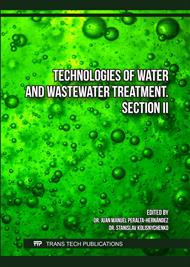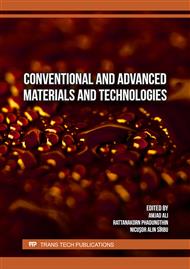p.43
p.49
p.63
p.73
p.79
p.87
p.93
p.101
p.109
Enhancing Wastewater Treatment Efficiency through Photosynthetic Bacteria Activation
Abstract:
This study presents a novel wastewater treatment method that combines Photosynthetic Bacteria (PSB), chicken egg nutrients, and a fibre-optic light-guided system in a partially transparent tank. The mixture of water, wastewater, and PSB was created and left to develop for 72 hours. The dissolved oxygen levels were recorded in real-time, and it was found that an excess of dissolved oxygen is necessary for efficient wastewater treatment. The optimal light intensity was determined using optical filters, with a 34% VLT filter being used to achieve the ideal light intensity. The temperature changes in the tanks were closely linked to the amount of light received, with direct sunlight causing the highest temperature increase. The research also highlighted the competitive ability of algae to absorb light, resulting in a significant decrease in relative dissolved oxygen levels when exposed to direct sunlight. The study also highlighted the potential of LED light as an additional or substitute light source, improving the system's adaptability to different environmental conditions. Future research will focus on integrating LED light, light condensers, and natural sunlight to optimize wastewater treatment effectiveness, especially in environments with limited illumination.
Info:
Periodical:
Pages:
101-108
Citation:
Online since:
November 2024
Price:
Сopyright:
© 2024 Trans Tech Publications Ltd. All Rights Reserved
Share:
Citation:




